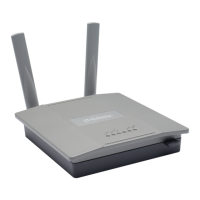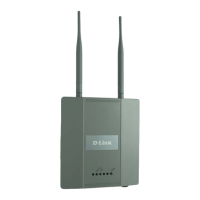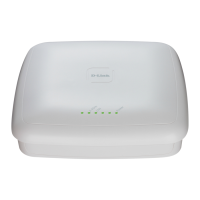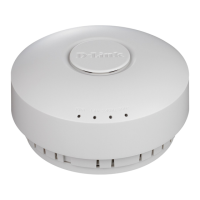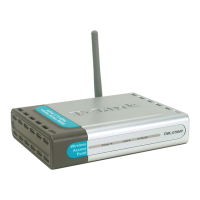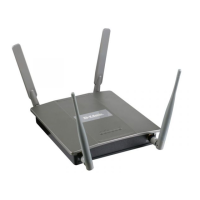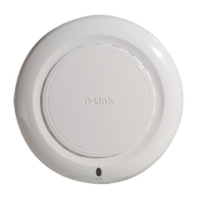Basic Setup
D-Link Unified Wired and Wireless Access System
Oct. 2015 Page 552
D-Link UWS User Manual
RTS Threshold Specify a Request to Send (RTS) Threshold value between 0 and 2347.
The RTS threshold indicates the number of octets in an MPDU, below which an RTS/
CTS handshake is not performed.
Changing the RTS threshold can help control traffic flow through the AP, especially
one with a lot of clients. If you specify a low threshold value, RTS packets will be sent
more frequently. This will consume more bandwidth and reduce the throughput of
the packet. On the other hand, sending more RTS packets can help the network
recover from interference or collisions which might occur on a busy network, or on
a network experiencing electromagnetic interference.
DTIM Period The Delivery Traffic Information Map (DTIM) message is an element included in some
Beacon frames. It indicates which client stations, currently sleeping in low-power
mode, have data buffered on the access point awaiting pick-up.
The DTIM period you specify indicates how often the clients served by this access
point should check for buffered data still on the AP awaiting pickup.
Specify a DTIM period within the given range (1–255).
The measurement is in beacons. For example, if you set this field to 1, clients will
check for buffered data on the AP at every beacon. If you set this field to 10, clients
will check on every 10th beacon.
Beacon Period Beacon frames are transmitted by an access point at regular intervals to announce
the existence of the wireless network. The default behavior is to send a beacon
frame once every 100 milliseconds (or 10 per second).
The Beacon Interval value is set in milliseconds. Enter a value from 20 to 2000.
Load Balancing If you enable load balancing, you can control the amount of traffic that is allowed on
the AP.
Load Utilization This field allows you to set a threshold for the percentage of network bandwidth
utilization allowed on the radio. Once the level you specify is reached, the AP stops
accepting new client associations. Enter a percentage of utilization from 1 to 100.
Maximum Clients Specify the maximum number of stations allowed to associate with this access point
at any one time.
You can enter a value between 0 and 200.
Table 328: Radio Settings (Cont.)
Field Description

